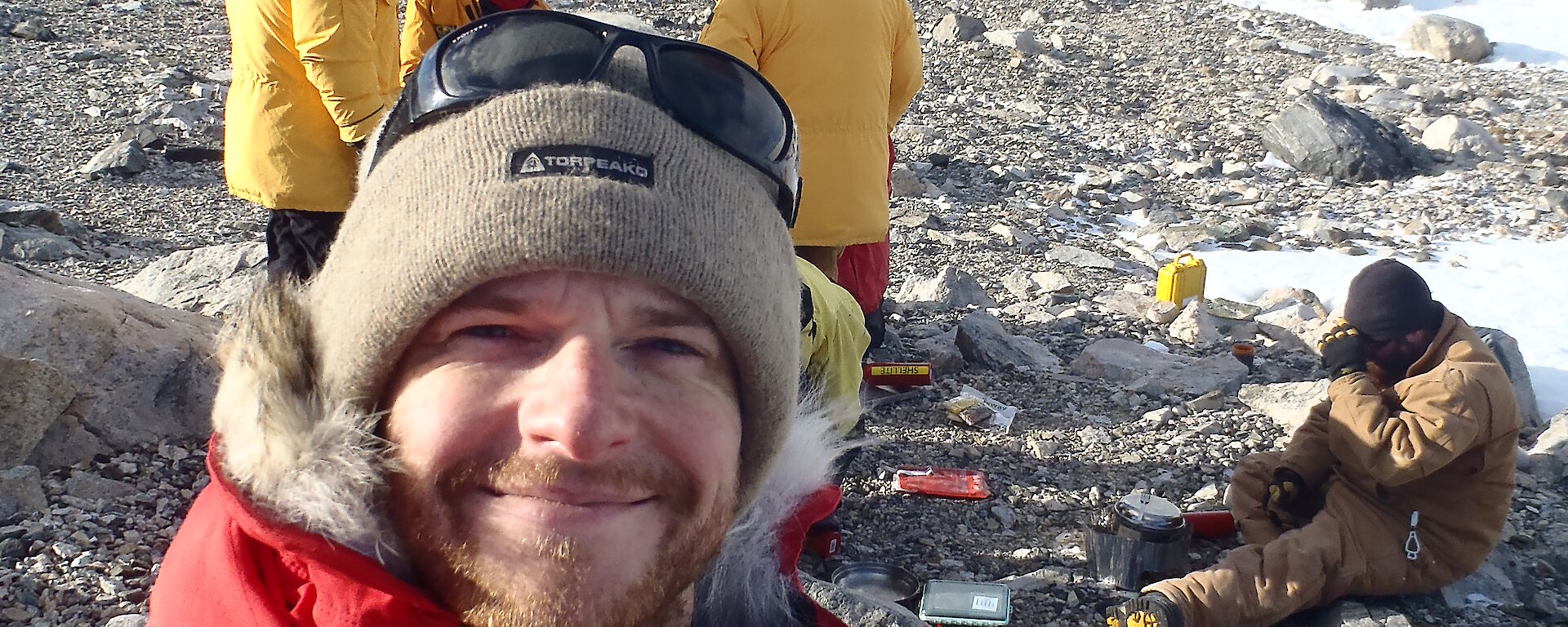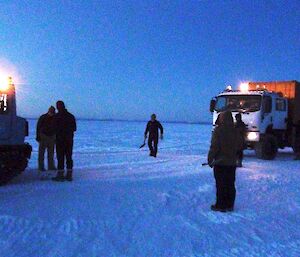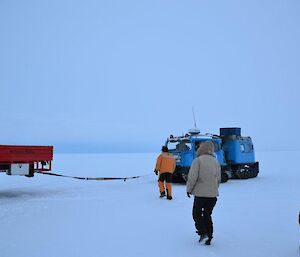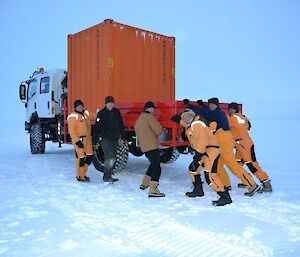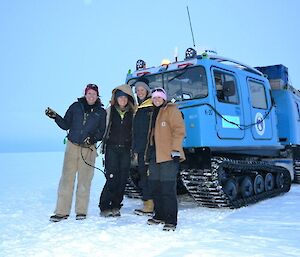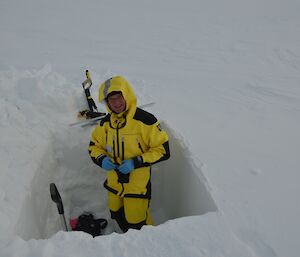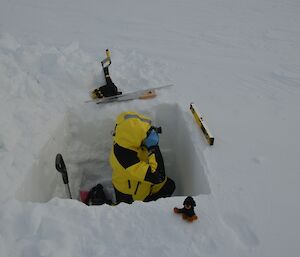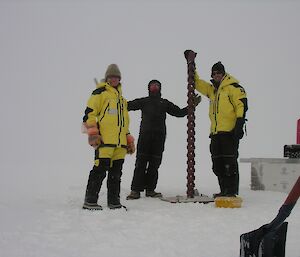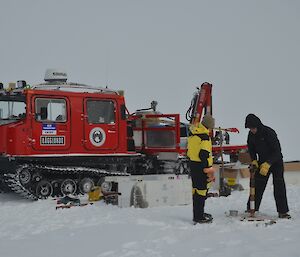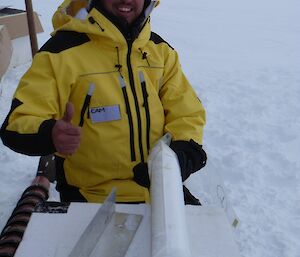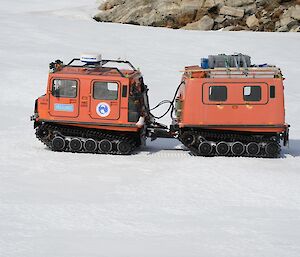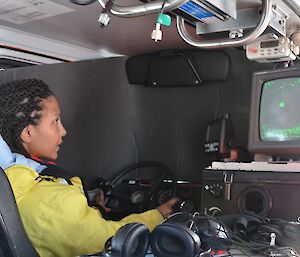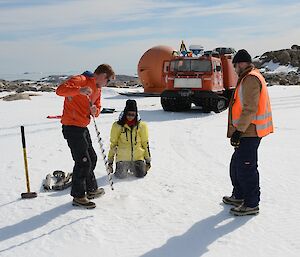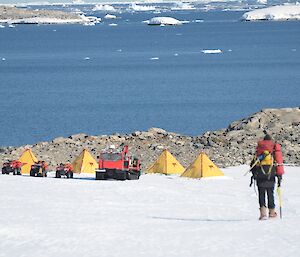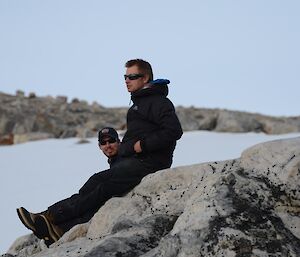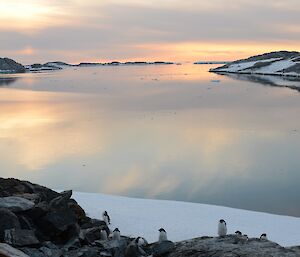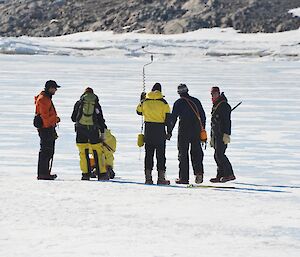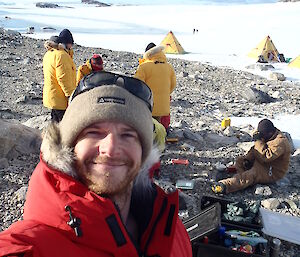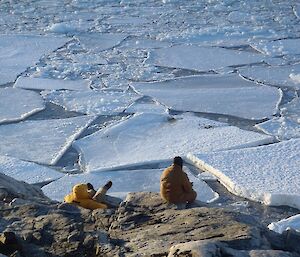During the month of February a field party consisting of two scientists (Andy and Ulla) from the Australian Nuclear Science and Technology Organisation (ANSTO), Casey’s Senior Field Training Officer (James) and one of the station's Senior Diesel Mechanics (Cam) set off to Law Dome with the intention to recover shallow ice cores and snow pit samples to assist with studies of the variability of our local star — the Sun.
The Hägglunds ride to Law Dome took approximately 5 hours with work commencing immediately on arriving at 1930. James and Cam quickly dug a 1m snow pit while Andrew and Ulla prepared the equipment to take PICO cores using a hand-powered auger.
With the pit dug, Andrew commenced to square off on face of the pit — the quarrying face. At 0100 the snow pit sampling was completed with thirty six 10x10x20 cm samples taken from various levels. By 0200 the PICO coring was completed with three cores of 3m length and one at 5m length successfully extracted.
This completed the first stage in what will be an unusual journey for the samples, or at least for the beryllium-7 (7Be) and beryllium-10 (10Be) atoms that are trapped in the ice sheet. These atoms are radioactive isotopes of beryllium that were produced in the atmosphere by cosmic radiation. Cosmic rays continually bombard the Earth, originating deep in the universe, probably from distant supernova. When they collide with the oxygen and nitrogen nuclei in the Earth’s atmosphere they smash them into smaller pieces and these smaller pieces in turn cause more nuclear reactions to take place as the energy of the initial cosmic ray is lost.
Some of these nuclear reactions give rise to 7Be and 10Be that become attached to aerosols and are transported though the atmosphere to the surface of the Earth. Because polar ice sheets are annually layered we can tell when they made it to ground. But to detect them is a complex business and requires a very specialised technique called Accelerator Mass Spectrometry, or ‘AMS’ and a very large particle accelerator called ANTARES at ANSTO in Lucas Heights, Sydney. 10Be has a very long half-life of 1.4 million years, so we have plenty of time to make the measurements. 7Be has a very short half-life of 53 days, and this is where the Australian Antarctic Divisions Air Link comes in: we are able to rapidly return the samples to Australia, process and get them in to the accelerator quickly for measurement. Speed is of the essence!
The rate at which the 7Be and 10Be is produced depends upon the intensity of the Sun. This is because most of the cosmic rays are electrically charged particles and are thus deflected by the Sun’s magnetic field that permeates our Solar system. For instance, the well-known 11 year Solar cycle can be readily distinguished in the measured concentration of 10Be in the ice sheet. But the Sun also varies over much longer timescales and we are interested to know about this because the Sun drives the Earth’s climate system.
Once the samples make it back to Hobart the three short cores are cut to size, combined, melted, filtered and passed through an ion exchange column; this is then returned to Sydney for further processing with 10Be atoms trapped inside. Snow pit samples from each level are combined and processed similarly, but this time we are also interested in the 7Be atoms trapped along with the 10Be atoms. But without an accurate chronology all this effort would be wasted. This is where our colleagues in the Antarctic Division play an essential role, establishing the chronology of the longer core and matching it and the other samples to the ‘master’ DSS chronology.
This Antarctic Science project (#3064) doesn’t aim to go far back in time, but rather to develop a detailed record, at monthly resolution, of 7Be and 10Be concentrations. In combination with neutron monitor data, satellite observations of the Sun and numerical Global Circulation Models (GCMs) we are trying to separate atmospheric transport effects from the production signal. We have been doing this since 2000 and we are now better able to interpret the much longer records we hope to take in future years.
After collecting the samples our work was not over and the remaining tasks were still being finalised at 03:00 by the Hägglunds’ headlights with the full moon in the sky and the sun rising on the horizon.
Then began the long journey back to Casey, arriving at 09:15 on Friday.
All up, a good day’s work!

